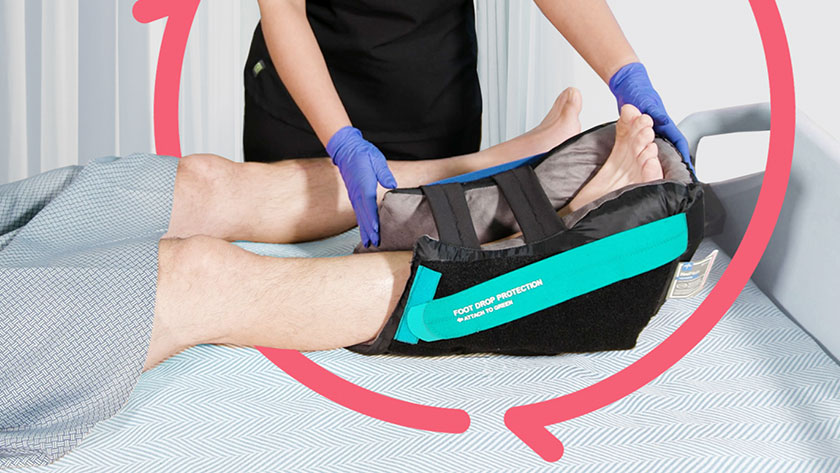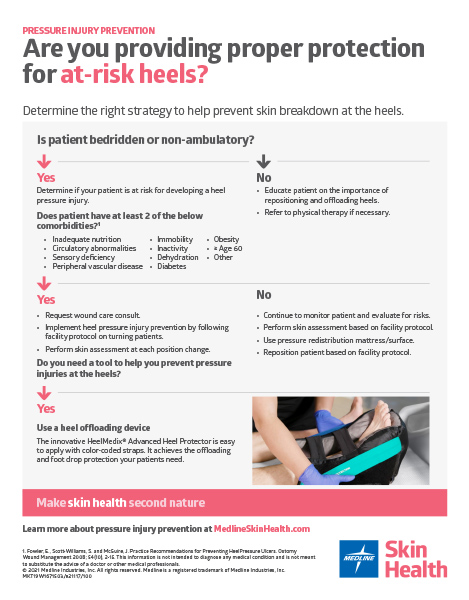Help prevent pressure injuries on heels: Download our guide
Here’s your answer guide to heel offloading devices that help reduce skin breakdown.

Preventing pressure injuries/ulcers is an important aspect of both clinical care and the healthcare system at large. A 2013 U.S. Medicare study reported that the incidence of hospital-acquired pressure injuries is as high as 4.5 percent in hospitalized patients, with the care of these injuries costing an estimated $11 billion.1
More than a third of stage 4 pressure injuries occur at the heels, which is why the National Pressure Injury Advisory Panel dedicates an entire section of their Clinical Practice Guideline to discussing how to prevent these injuries.2
4.5%
Incidence of hospital-acquired pressure injuries1
$11 billion
Cost of hospital-acquired pressure injuries1
38.5%
Of stage 4 pressure injuries occur at the heels2
All clinicians should have the proper knowledge, skills and resources to reduce the likelihood of pressure injuries. But when you’re constantly on the go and in demand, it can be challenging to always recognize the opportunities for improving your facility’s pressure injury prevention protocols.
That’s why this simple guide works like a decision tree for you and your staff. You can use it as a reference to help standardize your selection of heel offloading devices.

Discover more content focusing on preventative best practices and products:
How can you help prevent skin tears in elderly patients?
Webinar—Incontinence Associated Dermatitis: Challenges and Innovations in Care
Nurse leaders: Want to influence others to create a preventative culture? Here’s how.
Learn more about pressure injuries and Medline’s unique system of products to help prevent and treat skin breakdown
References:
- Pressure Ulcer Prevention in the Hospital Setting Using Silicone Foam Dressings. (2016, August 1). PubMed Central (PMC). Available at https://www.ncbi.nlm.nih.gov/pmc/articles/PMC5016040/
- 2019 Clinical Practice Guideline for Prevention and Treatment of Pressure Ulcers/Injuries (p 145-154)

